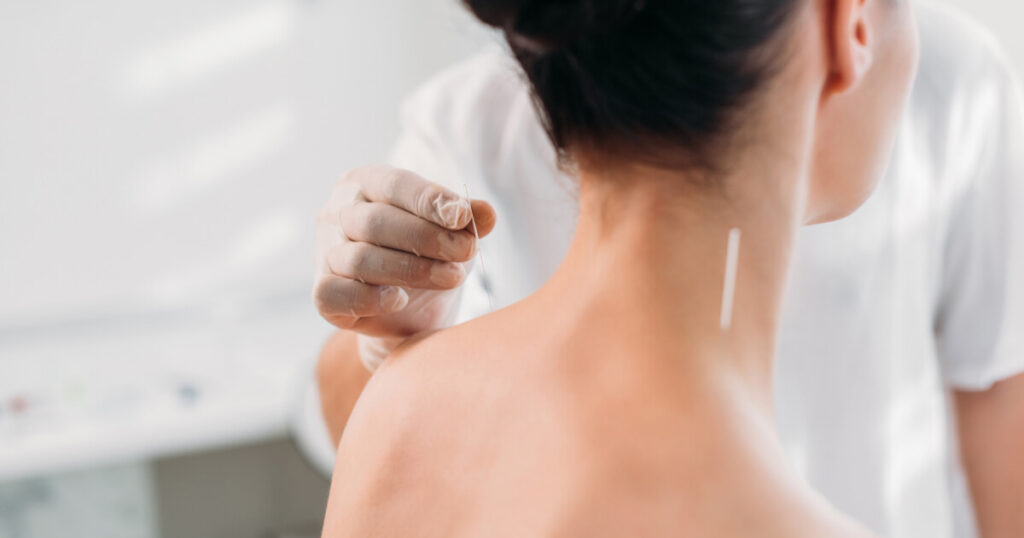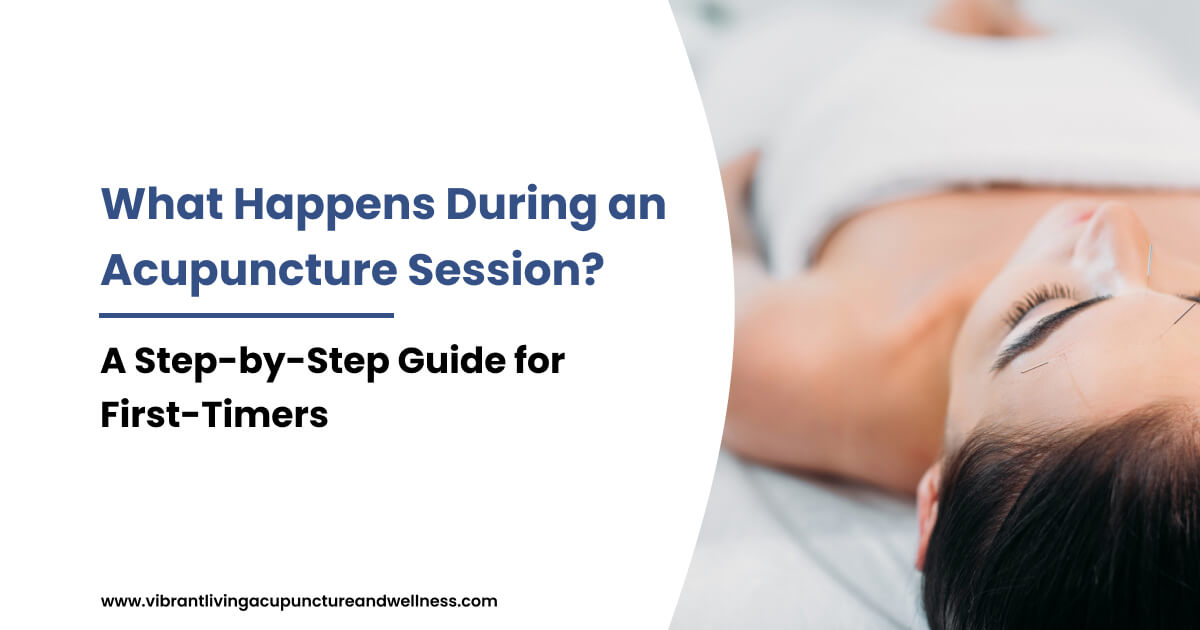If you’ve ever been curious about acupuncture but felt unsure about what actually happens during a session, you’re not alone. For many first-time patients, acupuncture can feel mysterious or even a little intimidating. You may wonder:
- Will it hurt?
- What will the practitioner do?
- Do I need to undress?
- How long will it take?
- Will I feel anything during or after?
This blog will walk you through what to expect during a typical acupuncture session, from the moment you arrive to how you may feel afterward. Understanding the process can help you feel more relaxed, informed, and open to the healing potential of this ancient and increasingly popular practice.
Step 1: The Initial Intake – A Holistic Health Conversation
Every acupuncture session begins with a conversation. For your first visit, this intake is more extensive, often lasting 20–30 minutes. Follow-up visits typically include a shorter check-in (5–10 minutes), but always revisit how you’re doing.
During the intake, your acupuncturist will ask about:
Your Main Health Concern(s)
This marks the beginning of your acupuncture journey. You’ll be invited to share the primary issues or symptoms that brought you in, such as chronic pain, fatigue, anxiety, or fertility concerns. Understanding your top concerns helps guide the focus of your treatment.
Sleep Patterns, Digestion, and Energy Levels
Your acupuncturist will ask about your sleep quality, digestive habits, and overall energy levels throughout the day. These areas provide important insights into internal balance and how your body functions on a daily basis.
Stress, Mood, and Emotional Wellbeing
Emotional health plays a central role in Traditional Chinese Medicine. By exploring your mental and emotional state—such as how you handle stress or if you’re experiencing mood swings—your practitioner can identify energetic patterns that may be contributing to physical symptoms.
Menstrual History (If Applicable)
For women and those with menstrual cycles, details such as cycle length, flow, PMS symptoms, and irregularities provide valuable diagnostic information. This is especially relevant for concerns related to fertility, hormonal balance, or chronic reproductive conditions.
Medical History and Medications
You’ll also be asked about any past diagnoses, surgeries, or conditions, as well as medications or supplements you’re currently taking. This ensures that your treatment is safe, comprehensive, and aligned with any other care you’re receiving.
This isn’t just a symptom checklist. Acupuncturists are trained to look at your health holistically, meaning they consider the connections between physical, emotional, and energetic imbalances. Two people with the same diagnosis (e.g., migraines) may receive different acupuncture treatments, depending on their unique underlying patterns.
Step 2: Tongue and Pulse Diagnosis
One unique feature of Traditional Chinese Medicine is the use of tongue and pulse diagnosis.
Tongue Diagnosis in Acupuncture: What Your Tongue Reveals About Your Health
As part of Traditional Chinese Medicine, tongue diagnosis is a key tool used in acupuncture sessions. Your acupuncturist may ask you to briefly stick out your tongue to examine its shape, color, and coating. These details can reveal valuable insights about the health of your internal organs, energy flow (qi), blood circulation, and fluid balance.
Pulse Diagnosis in Chinese Medicine: Reading Beyond the Heartbeat
Pulse diagnosis is another important part of acupuncture evaluation. Your practitioner will gently feel the pulse on both wrists—not just to check your heart rate, but to assess the pulse’s strength, rhythm, and depth. These subtle qualities reflect the state of your organs and meridians, helping guide a treatment plan that is tailored to your unique constitution.
These diagnostic tools help refine the treatment strategy, ensuring the acupuncture points chosen are personalized to your pattern and not just your symptoms.
Step 3: Lying Down and Getting Comfortable
Once the intake is complete, your practitioner will guide you to a comfortable treatment table, similar to those found in a massage room. Depending on the points being used, you may lie face up, face down, or on your side.
You may be asked to remove socks or roll up sleeves or pants to expose areas like your lower legs, arms, or back. Most sessions do not require full undressing, and modesty is always respected. A blanket or sheet is provided to keep you warm and relaxed.
The room is typically quiet, softly lit, and calm, designed to create a soothing environment where your body and mind can relax.
Step 4: Needle Insertion – Gentle and Precise
Now, the acupuncture begins. The practitioner will gently insert sterile, single-use, hair-thin needles into selected acupuncture points. You might feel a quick, subtle prick or pressure as the needle goes in, but many people are surprised to find it doesn’t hurt.
In fact, most people describe sensations like:
- A dull ache
- Warmth
- Tingling
- Heaviness or lightness
- A slight “spreading” sensation
These feelings are signs that qi (energy) is being activated at the point. The experience is not painful but may feel unusual — a sign that something is shifting.
Most treatments involve 10 to 20 needles, depending on the condition and constitution of the individual. The insertion process takes just a few minutes.
Step 5: The Resting Phase – Healing in Stillness
Once the needles are in place, you’ll be left to rest quietly for about 20–30 minutes. This is where the magic happens.
During this time:
- Your nervous system shifts into parasympathetic mode (rest and digest)
- Stress hormones decrease
- Blood flow improves
- Natural healing chemicals are released
You may feel deeply relaxed, dreamy, or even fall asleep — known as an “acu-nap.” Some people feel emotional or mentally clear. Others may notice gentle waves of energy or warmth moving through the body.
The stillness allows your body to reset and begin the restorative process that continues even after the session ends.
Step 6: Needle Removal and Aftercare

When your rest time is complete, the acupuncturist will return, gently remove the needles (which usually feels like nothing), and offer you time to reorient before getting up.
- You might be given:
- A warm cup of tea or water
- Dietary or lifestyle suggestions
- Herbal recommendations (if your practitioner uses Chinese herbs)
- A treatment plan for follow-up sessions
Most people feel calm, centered, and grounded after a session. Some feel energized, while others feel like they want a nap. All responses are normal — your body is doing important work behind the scenes.
How Long Does a Session Take?
- First session: 60 to 90 minutes (including intake)
- Follow-ups: 45 to 60 minutes
Frequency depends on your goals:
- Acute issues: 1–2 sessions per week for a few weeks
- Chronic conditions: weekly or bi-weekly, tapering as improvement occurs
- Maintenance or prevention: monthly or seasonal visits
Tips for Your First Visit
To get the most out of your acupuncture session, consider these tips:
- Eat lightly beforehand — don’t come on an empty stomach
- Wear loose, comfortable clothing
- Avoid caffeine before your session (it may make you jittery or disrupt pulse reading)
- Arrive early so you can settle in without rushing
- Keep the rest of your day mellow if possible — let your body absorb and integrate the treatment
What Happens After?
You may experience immediate changes, such as reduced pain, deeper breathing, a sense of emotional peace, or increased energy. Sometimes the effects unfold gradually over 24–48 hours.
Some people experience a “healing response,” characterized by fatigue, emotional shifts, or a temporary intensification of symptoms. This is normal and usually short-lived — it’s your body adjusting and processing the treatment.
Consistency is key. While some individuals experience dramatic results after just one session, others require a series of treatments to achieve lasting change.
An acupuncture session is not just about needles — it’s a deeply restorative experience that nurtures your body, calms your mind, and rebalances your internal systems. Each step, from the thoughtful intake to the quiet rest period, is designed to support your healing on multiple levels.
Whether you’re seeking relief from pain, anxiety, fatigue, hormonal issues, or simply want to feel more balanced and connected to your body, acupuncture offers a unique space for natural healing, grounded in thousands of years of wisdom and increasingly supported by modern science.
This post is part of my Acupuncture – Frequently Asked Questions series. Stay tuned for the next blog, where we will cover how many treatments certain conditions may require.


